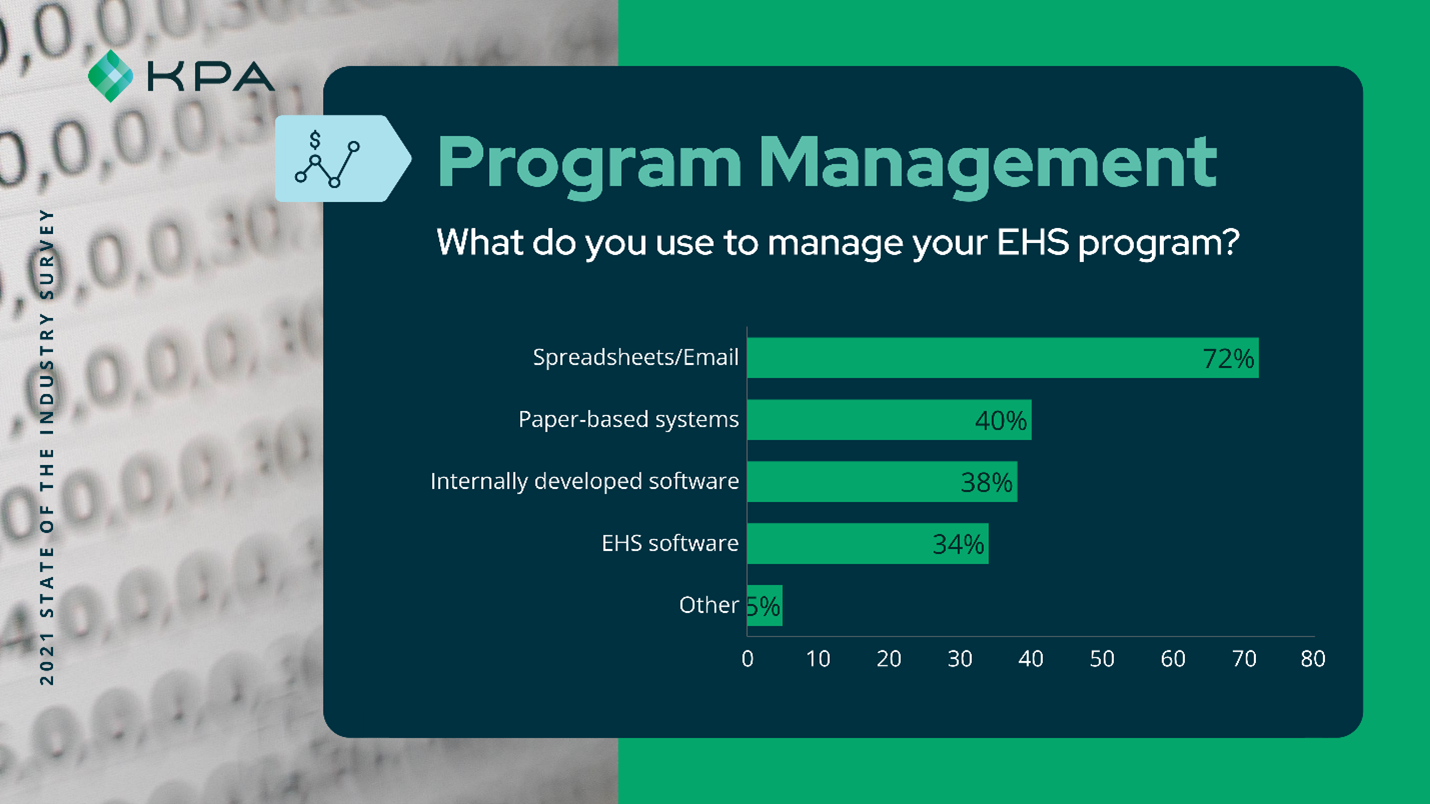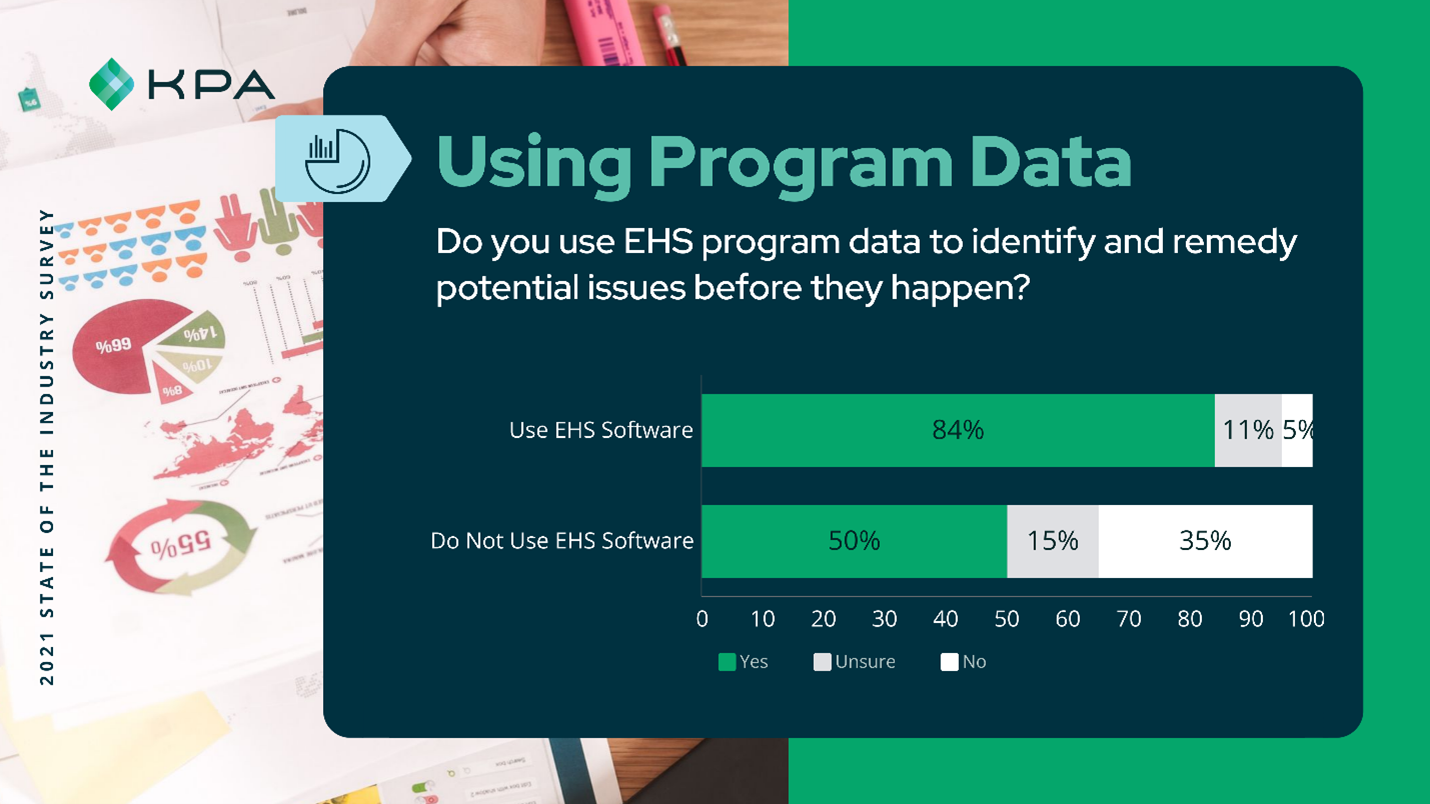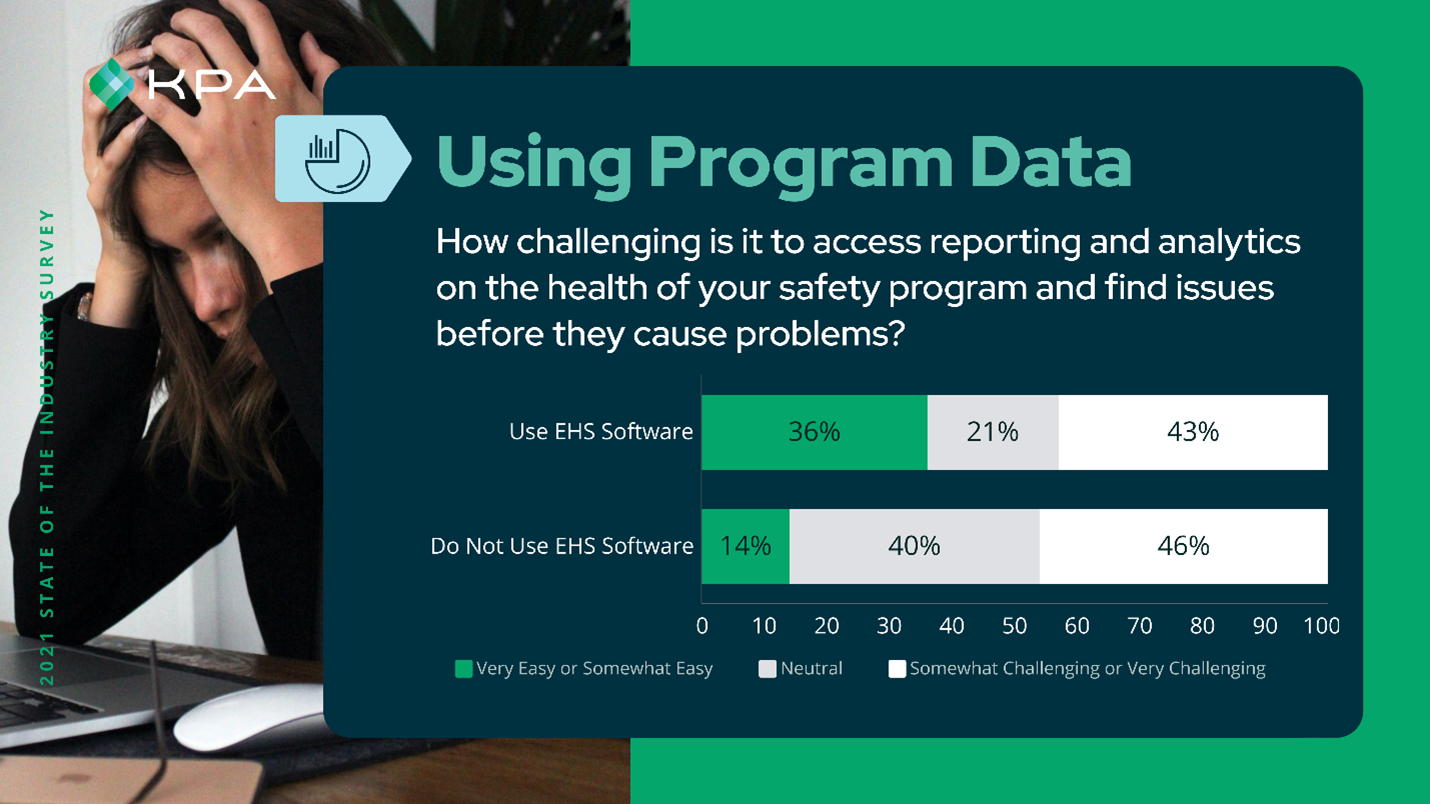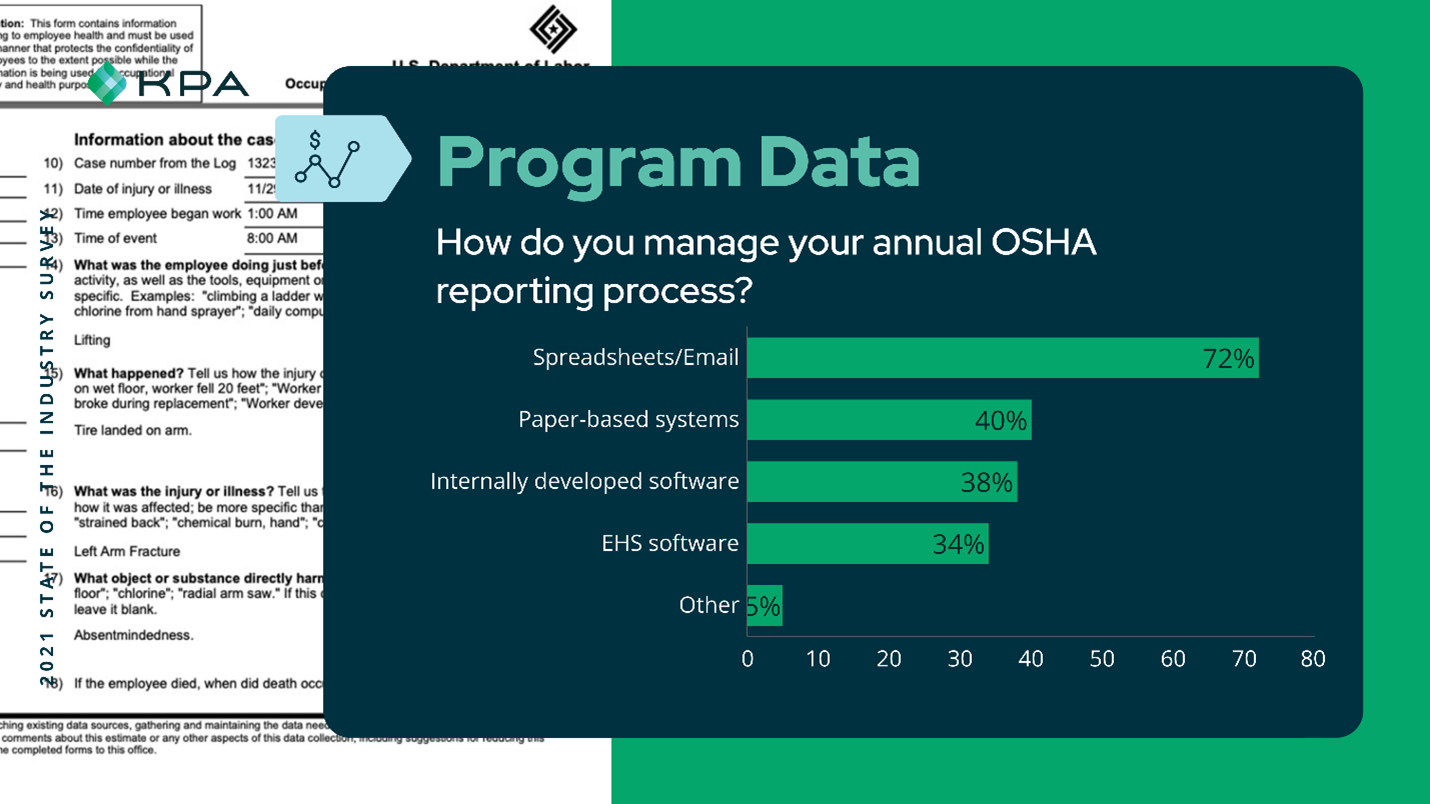High Performing Health and Safety Programs Rely on EHS Software

Making the case for EHS software relies on sharing collective data from high performers. And, luckily, we had the opportunity to do just that. Completed this June in partnership with EHS Today, the 2021 State of the Industry Survey explores trends in company Environment, Health, and Safety, (EHS) programs. Findings include data in investment and priority level as well as program strengths, weaknesses, and general performance.
Comparison data of those who utilize EHS software versus those who do not provides convincing evidence that safety programs reliant on outdated methods for accessing data, understanding program performance, and communicating with employees are performing below industry average.
The findings are clear:
An investment in the latest EHS software and technology improves performance.
Companies using EHS software report more accessible data on the performance of their safety programs, believe the benefits of investment in EHS technology outweigh the costs, and enjoy increased employee engagement and streamlined communication.To reap these benefits, companies must view their investment in EHS software and technology as an opportunity to greatly improve safety programs. Simply put, EHS programs that prioritize investing in the latest technology and software are performing consistently above the industry standard.
Efficient Data Access Improves Programs
Access to data that sheds light on a safety program’s health is one of the most important aspects of improved program performance, as it provides companies with information that can help prevent issues before they occur. Companies using EHS software have reported streamlined access to program data, with those respondents being more likely to use an automated solution for their reporting process. Overall, software developed in-house or purchased off the shelf are used by 72% of the respondents, yet spreadsheets and email are also still used by the majority.
Overall, software developed in-house or purchased off the shelf are used by 72% of the respondents, yet spreadsheets and email are also still used by the majority.Survey findings show that it is easier for companies who use EHS software to access reporting and analytics of the health of their safety programs, allowing them to identify potential issues before they cause problems for the company. Over a third (35%) of EHS software users report that access to reporting and analytics is “very easy” or “somewhat easy,” compared to only 15% of non-users. In fact, nearly half of non-software users noted the process of accessing analytics as “very or somewhat challenging.” As a result, the vast majority (84%) of companies who use EHS software have reported they are able to identify and remedy potential safety issues before they happen, compared to just over half of respondents who do not use EHS software. Non-software users report facing more challenges in their EHS programs, particularly in accessing data to prevent safety issues and analyze performance, compared to those who use EHS software.
 84% of companies who utilize EHS software have reported they are able to identify and remedy potential safety issues before they happen, compared to only 51% of respondents who do not use EHS software.
84% of companies who utilize EHS software have reported they are able to identify and remedy potential safety issues before they happen, compared to only 51% of respondents who do not use EHS software. 35% of EHS software users report that access to reporting and analytics is ‘very easy’ or ‘somewhat easy,’ compared to only 15% of non-users”; 45% of non-software users noted the process of accessing analytics as ‘very or somewhat challenging.’ The use of EHS software makes it easier to access reporting and analytics on the health of safety programs.
35% of EHS software users report that access to reporting and analytics is ‘very easy’ or ‘somewhat easy,’ compared to only 15% of non-users”; 45% of non-software users noted the process of accessing analytics as ‘very or somewhat challenging.’ The use of EHS software makes it easier to access reporting and analytics on the health of safety programs. Only 36% of companies are using EHS software to manage their annual OSHA reporting, while the majority are spending extra time and resources manually collecting data through paper or spreadsheets.
Only 36% of companies are using EHS software to manage their annual OSHA reporting, while the majority are spending extra time and resources manually collecting data through paper or spreadsheets.The benefits associated with investment in EHS software and technology are clear. And next week we’ll be diving into even more survey data – specifically around Safety Managers’ confidence in their programs and the results they’re seeing.
So, if the results are clear, how do you choose the right EHS software for your business?
Ultimately, the best EHS software is employee-centric. It generates better safety outcomes because it’s easy to use and people have an incentive to use it. In other words, a system needs to be built for your workforce. If it’s too complicated, unwieldy, or unintuitive—if it doesn’t align with their existing workflows—they won’t use it.To determine if a solution is the right fit for your people, ask the following questions:
- Are self-guided forms available?
- EHS reporting should take minimal time and effort on the employee's part.
- Can every user access forms and an information library?
- If the system creates silos, it's hardly better than a spreadsheets-and-binders approach.
- Is the solution mobile-ready?
- Business today happens on phones. Any employee should be able to quickly pull out their mobile device and enter information at a moment’s notice.
- Are data dashboards included?
- Any software you purchase should have strong reporting and dashboard capabilities. Again, ease of use is critical. Keep in mind that EHS might not be a user’s only job. When someone’s busy, they should be able to log in and find the exact data information they need, when they need it.
Topics:
Software & Data Management
Related
Sponsored Content
About the Author

Toby Graham
KPA
Toby manages the marketing communications team at KPA. She's on a quest to help people tell clear, fun stories that their audience can relate to.

